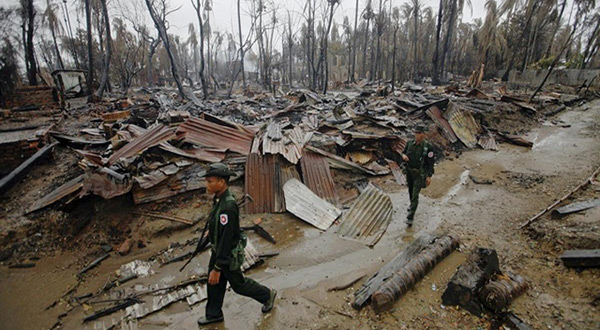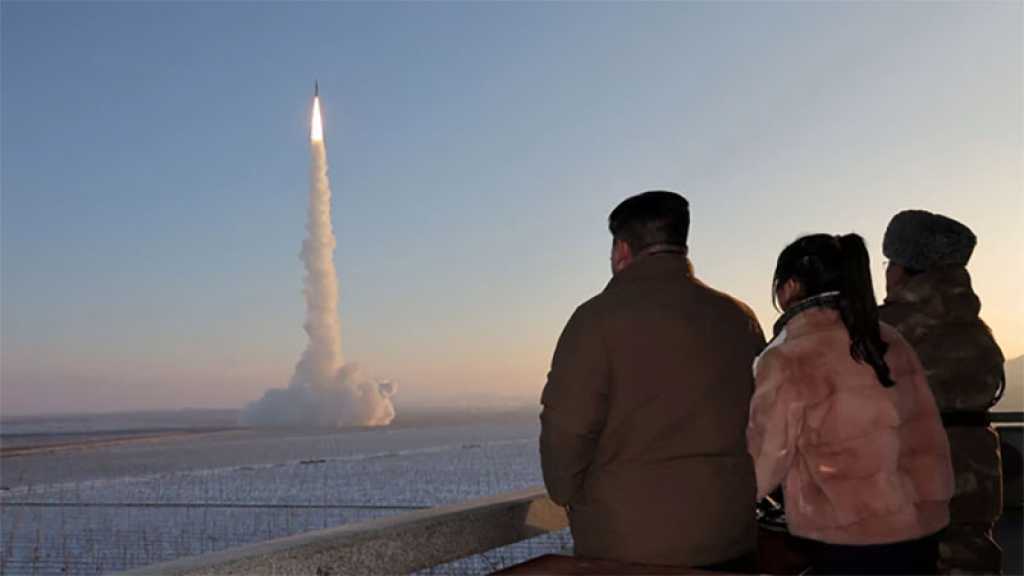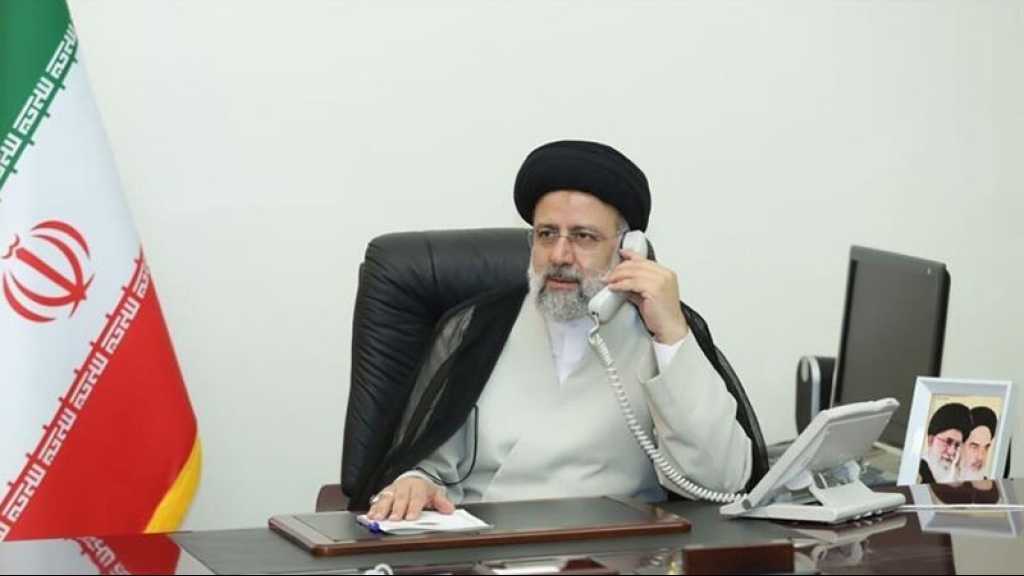
HRW: Myanmar Military Massacres Dozens in Rohingya Village

Local Editor
The Burmese military summarily executed several dozen Rohingya Muslims in Maung Nu village in Burma's Rakhine State on August 27, 2017, Human Rights Watch said Wednesday.

Witnesses said that Burmese soldiers had beaten, assaulted, stabbed, and shot villagers who had gathered for safety in a residential compound, two days after Rohingya militants attacked a local security outpost and military base.
HRW had not been able to verify estimates of the number of villagers killed. Satellite imagery analyzed by the group shows the near total destruction of the villages of Maung Nu [known locally as Monu Para] and nearby Hpaung Taw Pyin [known locally as Pondu Para]. The damage signatures are consistent with fire.
"All the horrors of the Burmese army's crimes against humanity against the Rohingya are evident in the mass killings in Maung Nu village," said Phil Robertson, deputy Asia director at Human Rights Watch. "These atrocities demand more than words from concerned governments; they need concrete responses with consequences."
On September 28, the United Nations Security Council met to discuss Burma publicly for the first time in eight years, but took no action. HRW repeated its call for the council and concerned countries to adopt an arms embargo and individual sanctions, including travel bans and asset freezes, against Burmese military commanders implicated in abuses.
The group spoke with 14 survivors and witnesses from Maung Nu and surrounding villages in the Chin Tha Mar village tract of Buthidaung Township. The witnesses, now refugees in Bangladesh, said that after the militant attacks they feared Burmese military retaliation.
Several hundred gathered in a large residential compound in Maung Nu. Several Burmese soldiers entered the compound while others surrounded it. They took several dozen Rohingya men and boys into the courtyard and then shot or stabbed them to death. Others were killed as they tried to flee. The soldiers then loaded the bodies - some witnesses said a hundred or more - into military trucks and took them away.
Witnesses told HRW that bout two dozen Burmese soldiers arrived at the crowded property late in the morning on August 27. One soldier, identified by many witnesses as Staff Sergeant Baju, led several soldiers into the courtyard and began calling to the people hiding in the house in the Rohingya language. Villagers said Baju had lived at the nearby military base for 15 years and spoke Rohingya. Several overheard Baju trying to convince the men and boys inside the house that they would not be killed if they left the buildings.
Villagers inside the courtyard as well as some who managed to escape and were observing from hillsides overlooking the compound, said that soldiers brought Rohingya men and boys into the courtyard. The soldiers bound their hands behind their back. Then they beat them, stabbed and slashed them with long knives, and shot them.
Abdul Jabar, 60, said the soldiers made the men kneel down as they struck them with the butts of their rifles and kicked them repeatedly before killing them: "[T]hey killed people from the back with machetes and they also fired on them with their guns."
Witnesses also described seeing children executed.
Mustafa, 22, said: "There was a pit with [the bodies of] 10 to 15 children, all under 12 years old. They were all young children hacked to death. I recognized four of the bodies: Hakim Ali, 9; Naim, 8; one child from Pondu Para, who was about 10; and Chau Mong, who was 7."
The removal of bodies took hours, several witnesses said. The also said that after the killings, the soldiers gathered the bodies on green tarps and loaded them onto pushcarts, then brought the bodies to military vehicles.
Many of the Rohingya spent weeks trying to reach the Bangladesh border, where they crossed with thousands of others.
In March, the UN Human Rights Council agreed to send a fact-finding mission of international experts to investigate the abuses, but the Burmese government said it would not allow the investigators to enter.
"Burmese military commanders cannot use the excuse of militant attacks to avoid justice and punishment," Robertson said. "The UN fact-finding mission needs to investigate these atrocities, including commanders who ordered the attack or failed to punish those involved."
Source: HRW, Edited by website team



